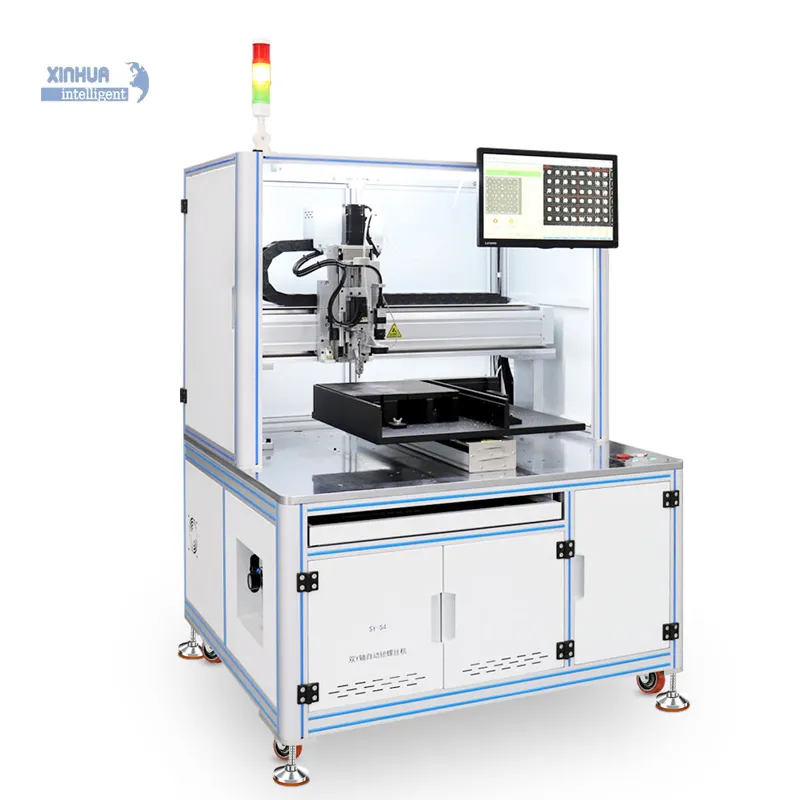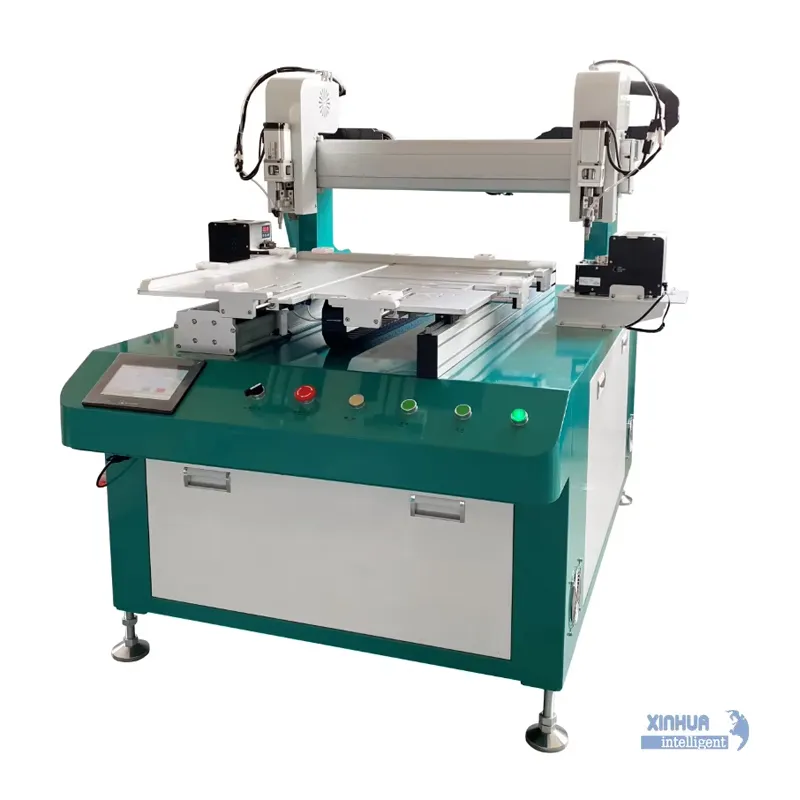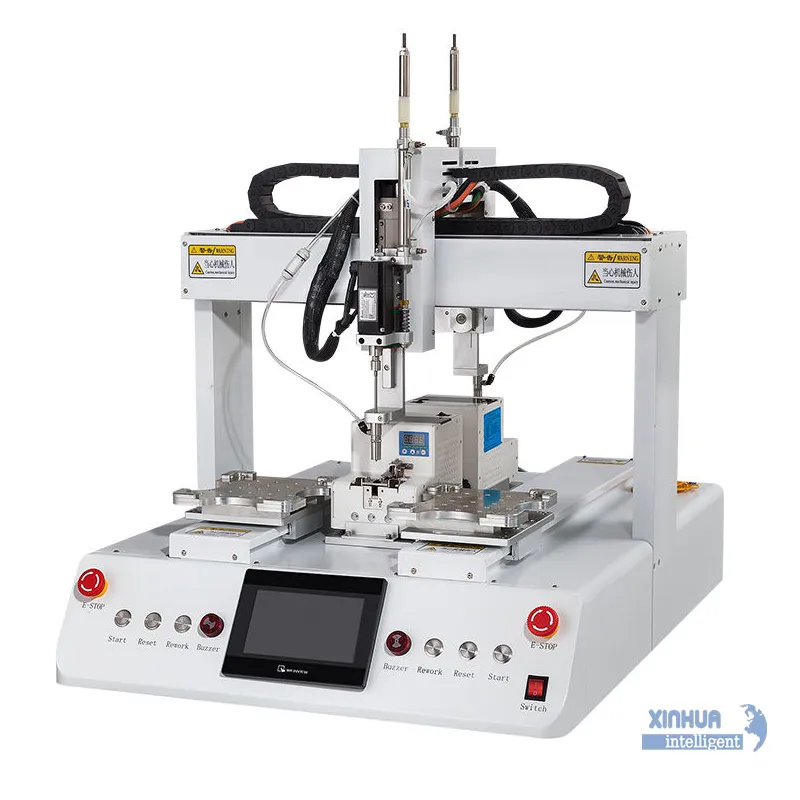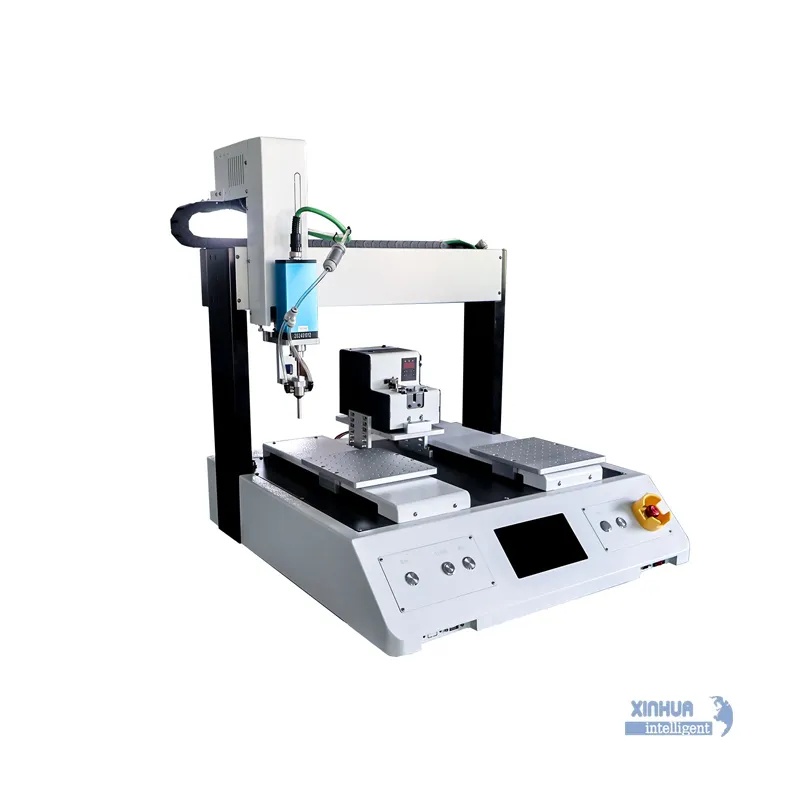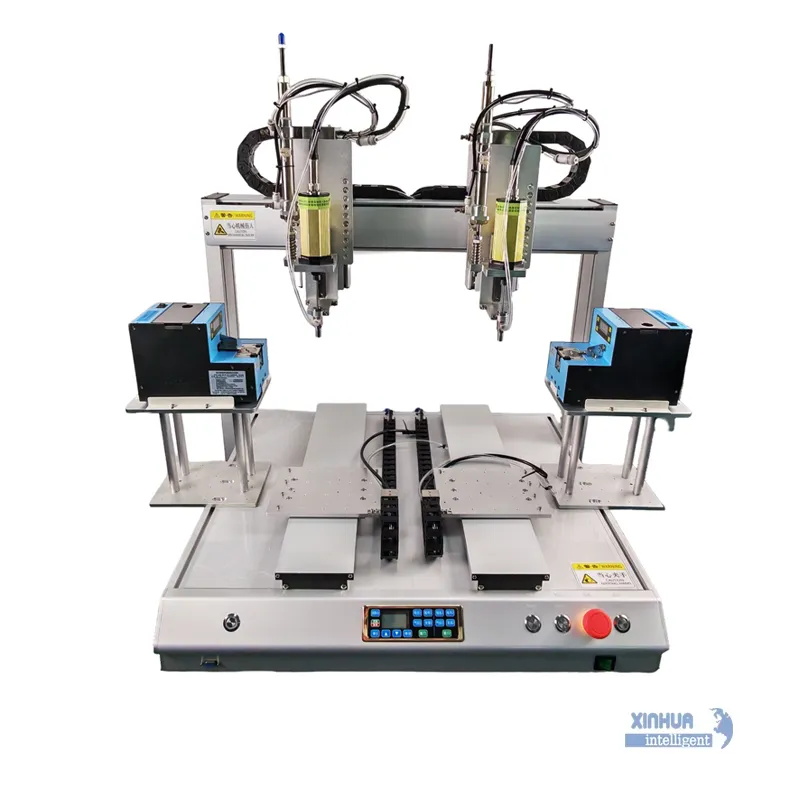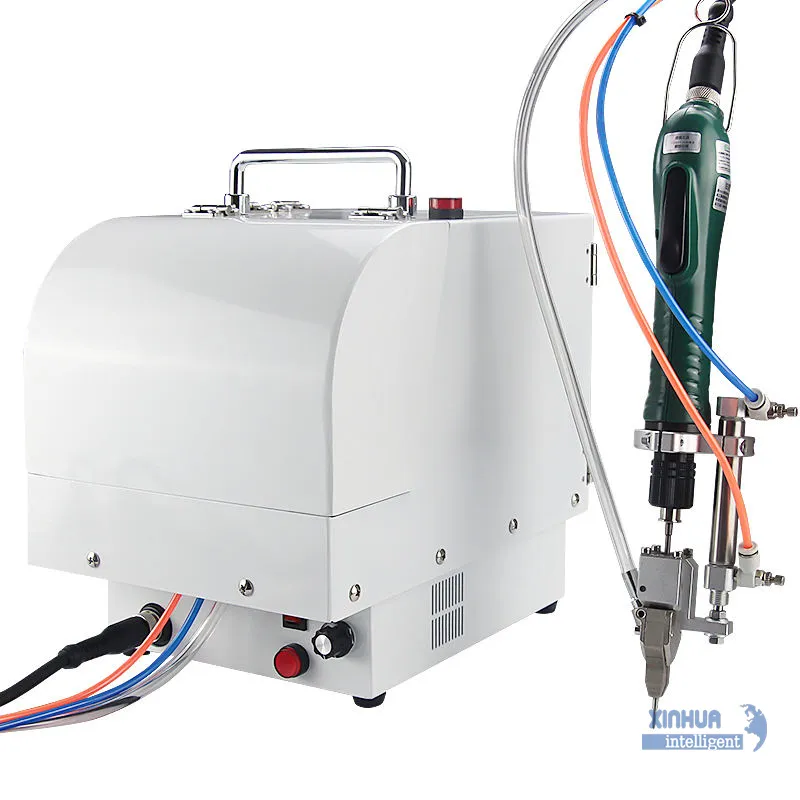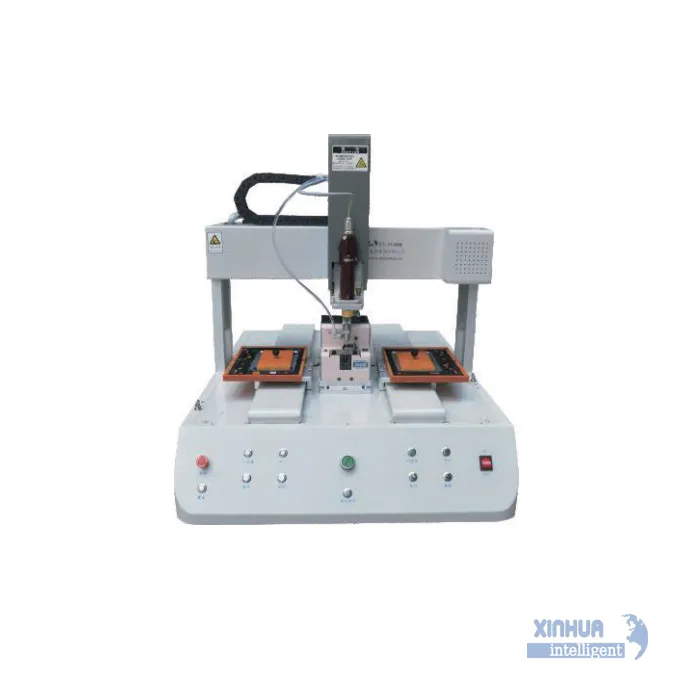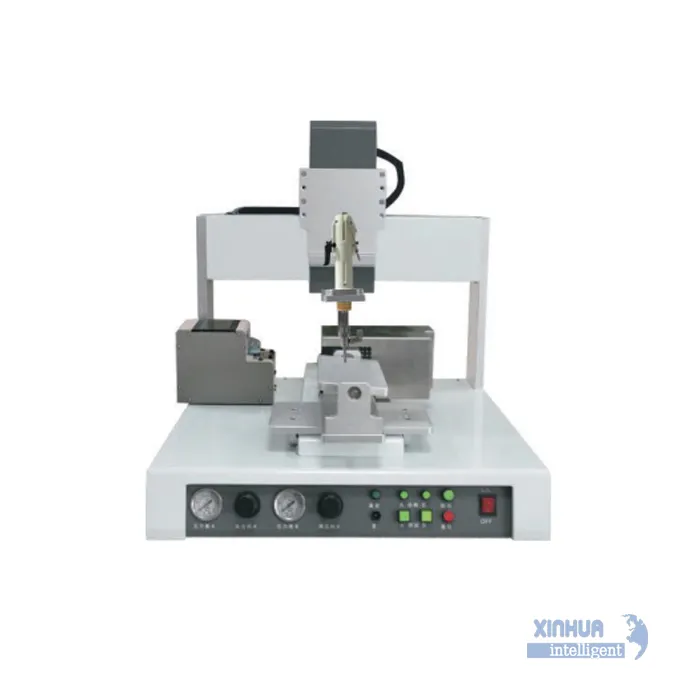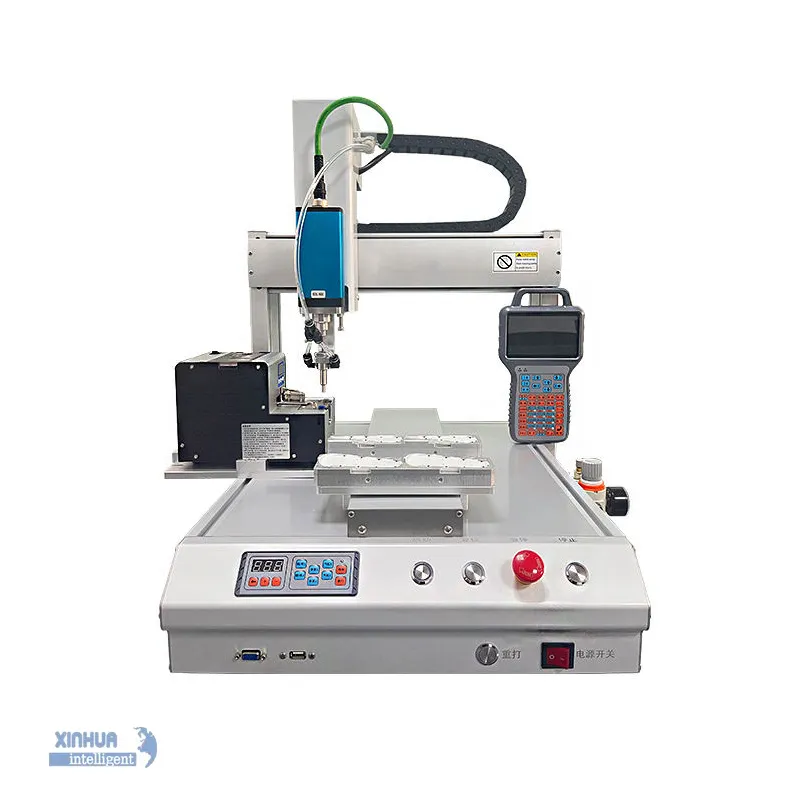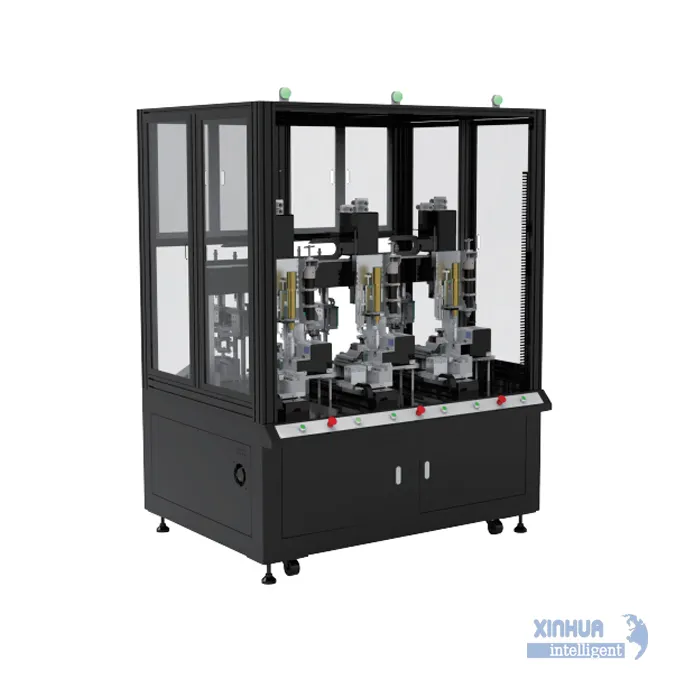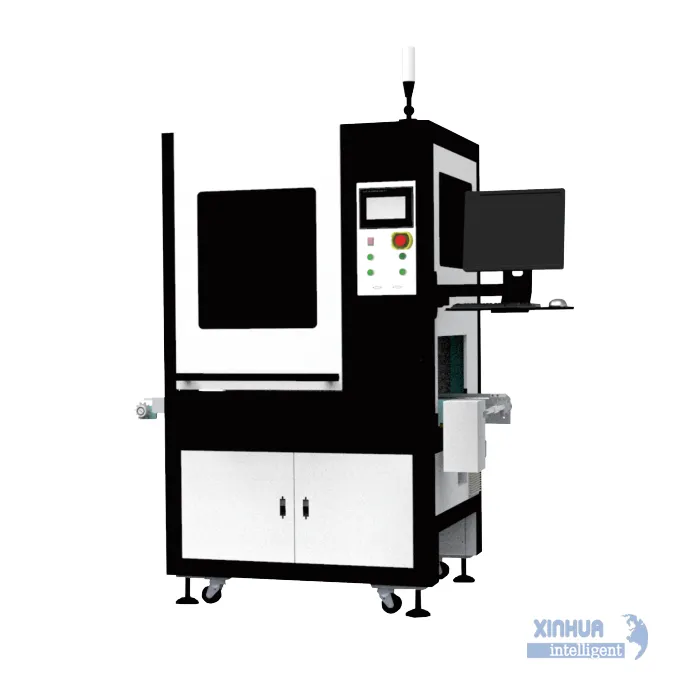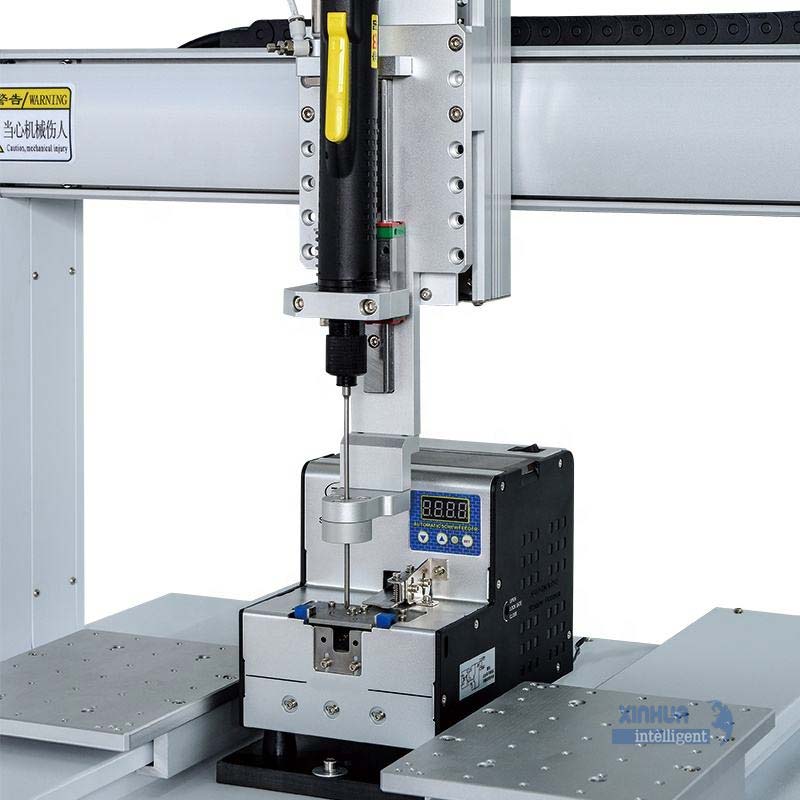
Core Mechanism Components and Process
-
Screw Feeding System: The machine includes an automatic screw feeder that supplies screws one by one from a storage unit through a conveying or transferring mechanism, often utilizing air suction or vibration to move and align screws properly for picking.
-
Positioning Platform (X-Y-Z movement): The screws are transported to a specific location on a movable platform with multi-axis control (X, Y, Z axes). The tool or screwdriver is positioned over the workpiece or screwed portion using these axes to ensure precise alignment.
-
Screw Tightening Head/Driver: The screwdriver bit engages the screw and is lowered to the workpiece. Initially, the Z-axis is controlled for positioning, then switches to press-fit control to apply the necessary axial force. The rotating axis drives the screw at a controlled speed and torque.
-
Control of Torque and Speed: The torque and speed of the screwdriver bit are controlled to ensure the screw is tightened properly. The system may switch from speed control to torque control once a certain axial position or resistance is met, ensuring consistent tightening torque without damaging the screw or workpiece.
-
Screw Transfer Mechanism: Some designs use a rotatable arm or feed head unit that brings the screw from the feeder to the screwdriver bit. The screw head is often held by suction or magnetic force to align and engage perfectly with the bit.
-
Sensors and Feedback: Various sensors check if screws are present and positioned correctly. Torque sensors or speed sensors monitor the tightening process to detect when the screw is fully tightened. The tightening is stopped automatically when the desired torque or rotation speed threshold is reached.
-
Automation Control: The entire operation is controlled by PLC or dedicated control software that coordinates feed commands, movement of axes, torque application, and throughput of the assembly line.
To summarize, the key mechanism revolves around automatic screw feeding, precise multi-axis positioning, controlled screw driving (speed and torque), and sensor feedback for accurate and consistent screw tightening without manual intervention. This improves production efficiency, consistency, and quality in assembly lines such as electronics, automotive parts, and appliance manufacturing.
If you want a concise sequence of operation:
-
Screw is fed automatically to the screw driver bit by a screw feeding mechanism.
-
The X-Y-Z axes position the driver over the tightening point.
-
The Z-axis first positions the screw, then applies axial force while the driver rotates the screw.
-
Speed and torque controls tighten the screw to a preset level.
-
Sensors detect completion and the system retracts for the next screw.
This is a common mechanism in auto screw tightening machines employed industrially.

